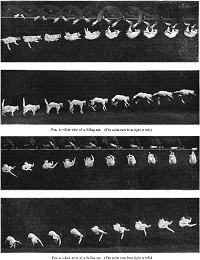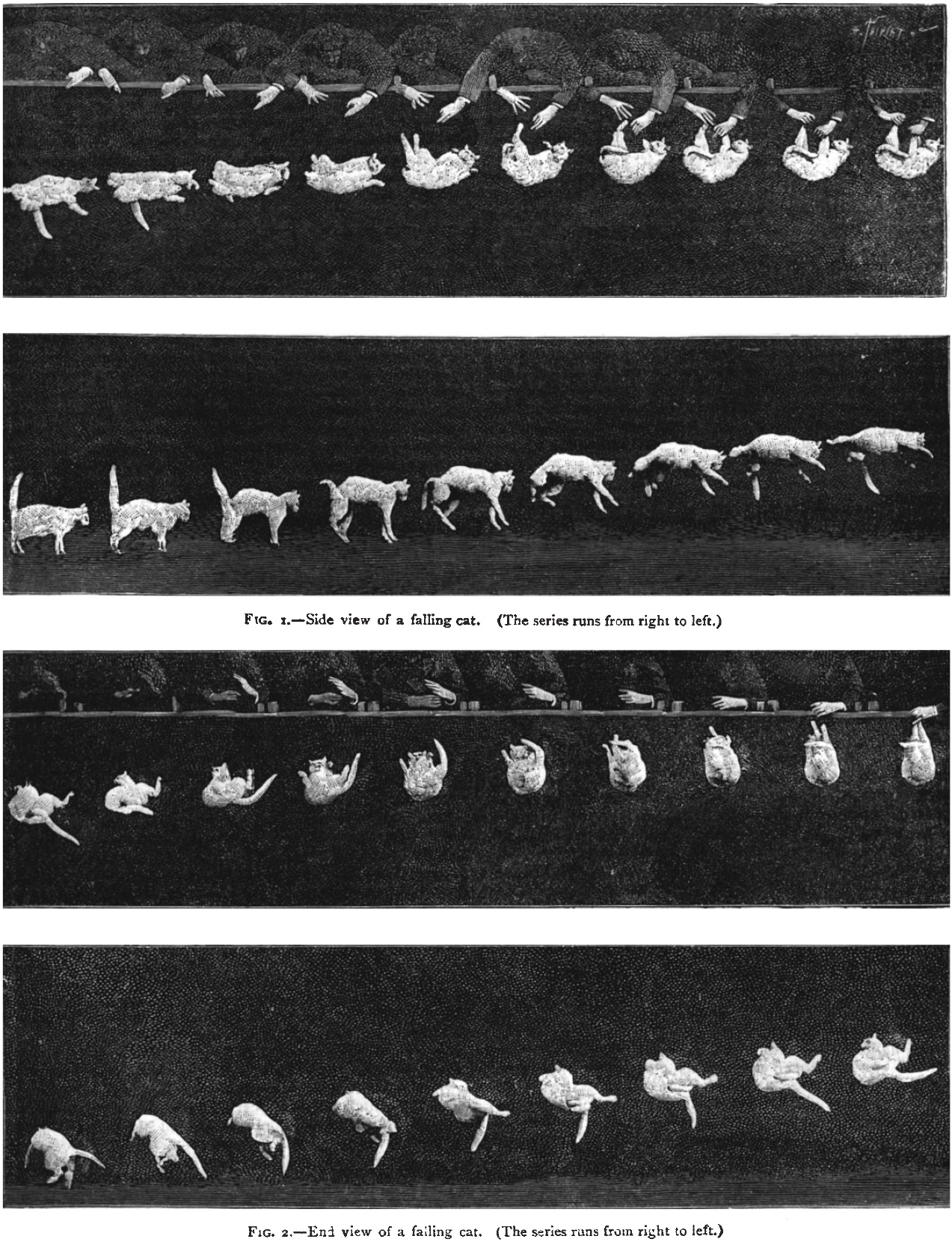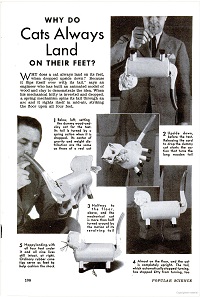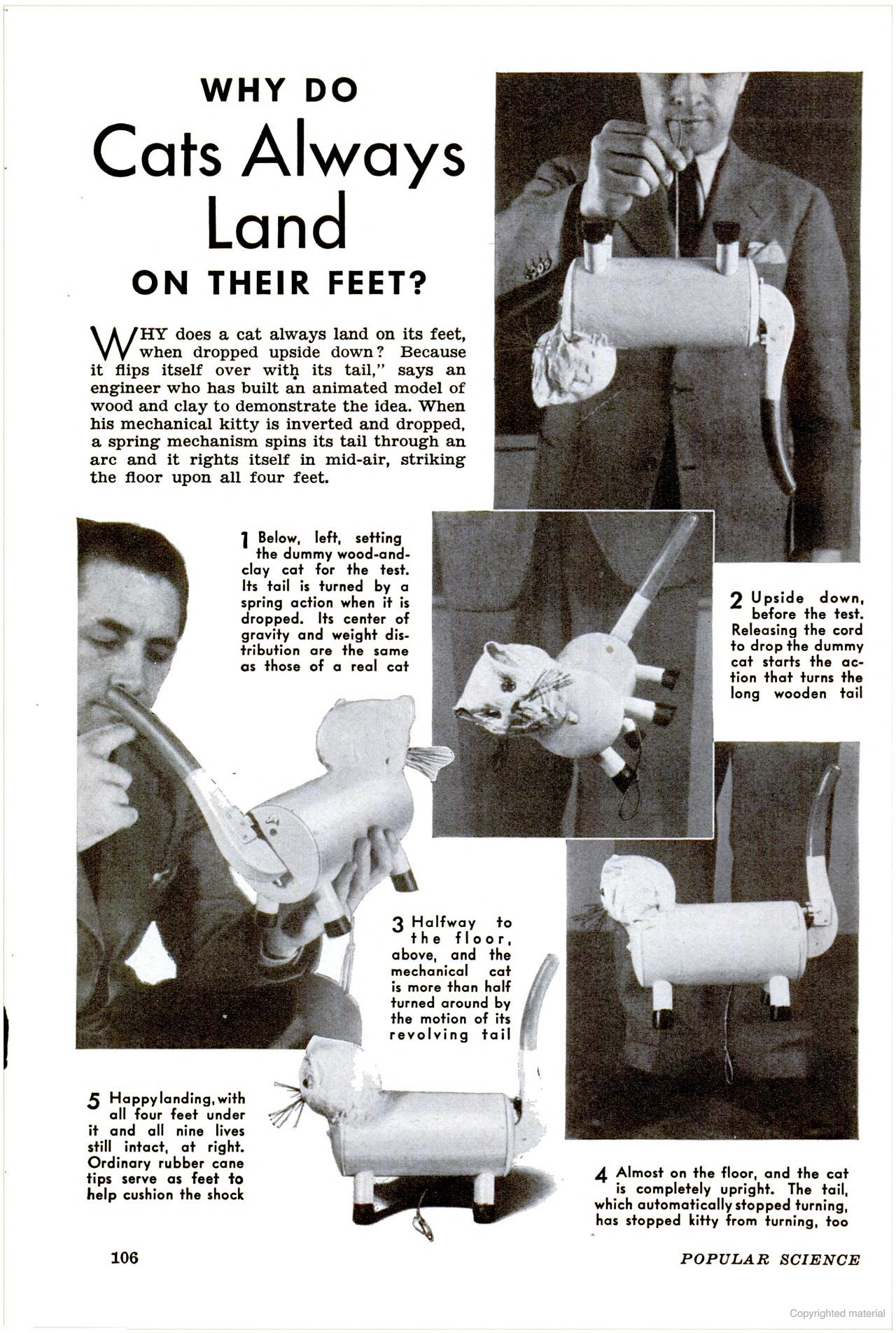Falling: A Brief History of Dropping Cats
Cats are reknowned for (almost) always landing on their feet, but it wasn't until recently that people started to understand how.
The 19th century Scottish scientist, James Clerk Maxwell, conducted a series of experiments to determine that the minimum height from which an upside-down cat can fall and still right itself is 30 cm. Below that height and they do not have enough time to flip over.


Falling from that minimal height, a cat's speed is sqrt(2gh) = sqrt(2 * 9.80 ms/^2 * 0.30 m) = 2.42 m/s. The terminal velocity of the average 4.5 kg cat is 27 m/s, which they reach when falling out of seven-story windows. Amazingly, cats often survive this fall which is due in part to their small size, ability to land on their feet, and relatively high air resistance as they spread their legs while falling to increase their surface area and drag.
In 1894, Etienne-Jules Marey took advantage of recent advances in photography to study the motion of cats flipping over. Note how the handler is holding the cat upside-down by its paws. This is the standard technique for dropping your cat.
In 1939, Popular Science ran an article with an engineer claiming he had figured it out through the use of a model. This model was later disproven. Aside from Tigger, cats don't have springs in their tails that allow them to store potential energy for flipping over.
58 years later in 1997, Popular Science again answered the question of how cats turn themselves over but without going into the physics of the matter: Cats use tiny hairs in the ear and their sharp eyes to determine which way is up, turn themselves so that their heads are right-side up, then the rest of the body follows. They said that healthy cats can right themselves if dropped from a height of three feet or higher, approximately 91 centimeters or a greater height than that determined by James Clerk Maxwell, while nearsighted or farsighted cats have difficulty righting themselves.


That's interesting, but that's not the real question. The question that has concerned physicists is, "How do cats right themselves - while conserving angular momentum?"